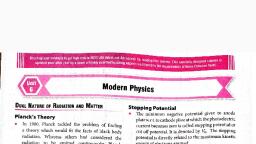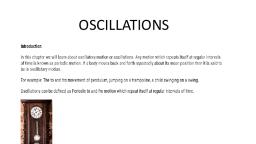Question 1 :
Identify the phenomenon due to which a converging lens forms an image :
Question 5 :
The radius of curvature of the convex surface ofa thin plane convex lens is 15cm and therefractive index of its material is 1. 6. The powerof the lens is will be-<br>
Question 6 :
The unit of luminous efficiency of electric bulb is------<span id="_wysihtml5-undo" class="_wysihtml5-temp">
Question 7 :
When total internal reflection occurs from a prism,________of incident light is reflected back to denser medium. Fill on the blank. 
Question 9 :
A ray of light incident on a lens parallel to its principal axis, after refraction passes through or appears to come from :
Question 10 :
When the length of a microscope tube increases, its magnifying power :<br/>
Question 13 :
A pencil dipped partially in water appears bent because of : <br/>
Question 14 :
How will the image formed by a convex lens be affected if the central portion of lens is wrapped in black paper?<br>
Question 15 :
The ray of light bending away from normal is called _____. Fill in the blanks.
Question 16 :
If the focal length of the objective lens is increased then 
Question 17 :
A convex lens is placed between object and a screen. The size of object is $3 cm$ and an image of height $9 cm$ is obtained on the screen. When the lens is displaced to a new position, what will be the size of image on the screen?
Question 18 :
If the angle of a prism is 60$^{\circ}$ and angle of minimum deviation is 40$^{\circ}$, then the angle of refraction in the prism will be <br/>
Question 19 :
The rising and setting of sun appear red because of : 
Question 20 :
When light is refracted, which of the following does not change?
Question 21 :
The focal length of the objective of a telescope is $60$ cm. To obtain a magnification of $20$ for the relaxed eye, the length of telescope should be
Question 22 :
The focal length of a convex lens is $10 cm$ and its refractive index is $1.5$. If radius of one surface is $7.5 cm$, the radius of curvature of the second surface will be
Question 23 :
A convex lens is in contact with a concave lens. The magnitude of the ratio of their focal lengths is 2/3. Their equivalent focal length is 30 cm. What are their individual focal lengths?<br>
Question 24 :
Two points separated by a distance of $0.1\ mm$ can be adjust resolved in a microscope when a light of wavelength $6000\ A^o$ is used. If the light of wavelength $4800\ A^o$ is used this limit of resolution becomes
Question 25 :
A converging lens of focal length $f$ is used as simple microscope. If the least distance of distinct version of the observer is $D$ and the lens is held close to the eye, the magnifying power of the lens is
Question 26 :
A concave lens of glass , refractive index 1.5, has both surfaces of same radius of curvature R.On immersion in a medium of refractive index 1.75, it will behave as a :-
Question 27 :
If a lens of focal length, $f$, made of glass of refractive index $ \dfrac { 5 }{ 3}$ is placed in a liquid of refractive index, $4\ \dfrac { 5 }{ 3 } $, then the focal length of the lens becomes<br/>
Question 28 :
An object is placed at a distance u from a simple microscope of focal length f. The angular magnification obtained depends.
Question 29 :
Distance between focus and optical centre of a lens is called ....................
Question 30 :
A symmetric double convex lens is cut in two equal parts by a plane perpendicular to the principle axis. If the power of the original lens is $4D$, the power of a cut lens will be
















































